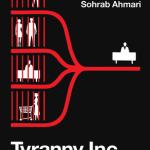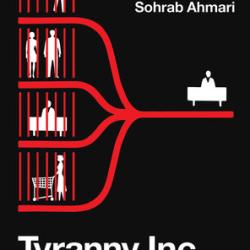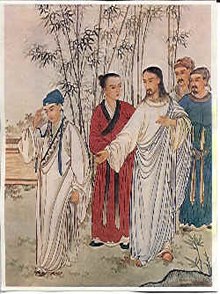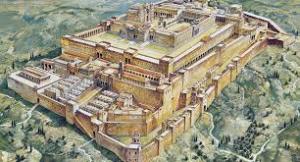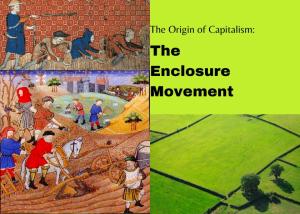
Sohrab Ahmari takes a long, historical view of capitalism and finds one period in the modern era when economies worked well. In the United States, this was the 40 or so years after the Great Depression and through the 1970’s – the New Deal years. In Europe, it began during the recovery from the Second World War. Ahmari calls this phase in world economies social democracy, or transatlantic “socially managed capitalism.” (p. 144) To understand Ahmari’s praise of this period, it will help to review the history of capitalism as he sees it.
The following brief history of the economic road to social democracy and beyond summarizes Ahmari’s view in Tyranny, Inc. with some additions from readily available sources. Ahmari pays much attention to the place of government in economies but takes little note of the role of taxes. I add some of my own observations in that area.
Capitalism: A Very Short History
Following Polanyi, Ahmari holds that Capitalism began with coercion. The Enclosure Movement in England and Continental Europe converted what had been the commons, land open to use by anyone, into private property. It had begun in a small way as early as the 11th century when King William awarded bits of land to royal figures in return for their loyalty. However enclosure expanded in a major way in the 18th century in England (19th century on the continent). By the end of the 19th century, practically all land was parceled out to private ownership – a gift of the king, I suppose, to lucky individuals.
Not-so-lucky individuals continued as farmers on land owned by others. Along came the Agricultural Revolution, facilitated by private ownership of farmland. More efficient farming meant fewer people could produce more food than before, forcing people off rural lands and into large cities. There they became cogs in the machinery of the Industrial Revolution. A new economic reality was born – mass poverty in the midst of extreme wealth. Meanwhile Colonialism had given Enclosure a new form. Land which had been the common possession of native peoples became haciendas and plantations and city blocks, the private property of European settlers.
In the United States Abraham Lincoln gave expression to the optimism of an expansive era. He spoke in praise of labor, the supplier for all human wants. The goods produced by labor belonged “of right” to the laborers who produced them. It was a conception of labor, Ahmari says, “firmly planted in the cheery preindustrial age of artisans, farmers, engineers, and others who toiled for no master.” (p. 24) These folks owned their own tools or small parcels of land.
But already there was growing a rift between a class of master/owners and wage earners. Lincoln couldn’t see how the Industrial Revolution “would largely sweep away the so-called masterless men.” (p. 24) His was a “cycle of labor” theory (Ahmari’s term). The prudent man begins as a mere wage earner but eventually buys tools or land for himself with the surplus he earns. Then he labors for himself a while until “at length he hires another new beginner to help him.” (p. 25) And the cycle of labor goes on. In this theory anyone who doesn’t advance to the status of the asset holders has only himself to blame.
Market Independence and the Lochner Era
Pre-modern society had its own forms of coercion and oppression, but it was a comprehensive social order into which the economy fit as one part. The market utopianism that grew up with the Industrial Revolution thought that the market and humanity’s impulse to “truck, barter, and exchange” produced its own order independent of any other social structure. Governments should keep hands off.
That’s largely what governments, by court mandate if nothing else, did in the Lochner Era, 1897 to 1937. That era took its name from a 1905 court case that barred a state government from limiting work weeks to 60 hours. For the court “liberty of contract” applied to employer and employee equally. An employee is free to sign or not sign, quit or stay. In other cases the court:
- allowed employers to force employees to renounce union membership,
- forbade the regulation of child labor,
- and knocked down a mandate for a pension plan.
Essentially what was in a contract didn’t matter to the court as long as the parties signed it freely. Such rulings would continue until the 1930s, ignoring the vast power differential between employees and employers. In most cases it’s harder for an employee to quit or not sign than for an employer to find another hire. From the Gilded Age to the end of the Lochner Era economies soared, but so did inequality.
A New Deal saves capitalism
The economic system that favored the powerful, asset-owning rich over the powerless, asset-less poor collapsed in a kaleidoscope of mistakes and bad luck. That’s a way of saying the Great Depression needn’t have happened. But it did happened, and at least some people realized that more than the economy needed saving. Strong-arm tactics by Franklin D. Roosevelt (he threatened to pack the Supreme Court) tamed the Lochner Era court. The National Labor Relations Act gave workers the right to join unions. Other laws guaranteed a minimum wage and overtime pay. A half-century of large corporations gobbling up smaller holders met with monopoly-busting anti-trust laws. Social democracy was born.
Roosevelt’s New Deal and laws that followed gave “countervailing power” to workers. (p. 155) The National Labor Relations Act encouraged unionizing and collective bargaining. The Fair Labor Standards Act gave protections to non-unionized workers. Welfare nets helped people avoid the worst effects of low pay and unemployment and, in the process, increased workers’ power. Workers could make demands with less fear. “A modicum of security breeds boldness.” (p. 156)
The economic growth that followed was shared by lower and upper classes. These were the “golden years” of social democracy. Starting with the war economy and continuing through the 1950s and -60’s unemployment was low. Productivity and the size of the economy grew as fast as ever before or after.
I remember one great contrast between this time and the times we are living through now. Then there was no tax revolt. The graduated income tax was especially high on the highest earners, and nobody claimed it was crushing big corporations and wealthy entrepreneurs’ ability to create jobs. In fact, job creation was in high gear.
Ahmari quotes economist Michael Lind: America’s “middle class enjoyed its zenith under a system of highly regulated…capitalism” and “suffered under the less regulated capitalism that preceded it and followed it.” (p. 158) Social democracy had saved capitalism from its own worst tendencies. But not forever.
What followed?
A neoliberal economic order followed the social democracy my parents and I, in my younger years, knew. It has been with us for almost half a century. Not exactly a consensus, its principles of low taxes, small government, and a smaller regulatory footprint on the economy found entry into both parties, but much less in the Democratic than the Republican. Going a step beyond classical liberalism of the 19th and early 20th centuries, it hasn’t been satisfied with live-and-let-live policies from government. The powerful actors in a neoliberal economy aim
… not just at liberating markets from politics but at turning politics itself into a tool of the marketplace and of neutralizing any political claims that don’t fit the logic and needs of capitalism. (p. 163)
Ahmari lays out the specifics of the program:
Public education? Trade unions? Financial regulations? Economic planning? Protection of security-sensitive industries? Borders and trade barriers? Redistributive welfare programs? Restrictions against commercialized vice? In the neoliberal frame, all have to justify themselves in market-competitive terms or face slashing ‘reforms,’ if not outright demolition. (p. 165)
The success of neoliberalism’s conquest of politics is visible in the decline of unions brought about by anti-union Supreme Court rulings and federal and state laws. Many states passed nicely titled “Right to Work” laws. That name really meant right to work without paying union dues even when the workplace has voted for a union. You can get the benefits your workplace union won without paying for it. Union representation has declined from about one-quarter of the workforce in the 1950s to one-tenth in 2023.
Then there’s the U.S. Supreme Court decision “Citizens United.” It gave corporations — fictive persons suddenly made more personal — the free-speech right to spend unlimited money on political campaigns. Government must not “impede the circulation of capital in markets for ideas and politics.” The political arena, democracy itself, has become a market. (p. 176)
The more things change, the more they stay the same.
What worked best for American workers was New Deal social democracy, a “combination of large private enterprise, high union density, and a vigilant administrative state….” (p. 184) Can that arrangement between economy and politics be recovered today, with the necessary corrections of its white-male bias? Ahmari offers some critiques of contemporary actors right and left and some rays of hope.
The critiques start with a warning against “culturalism,” the notion that healthier cultural norms of either the right or left variety will make economic conditions better. Pushing “family values” or woke speech patterns may be morally commendable, but a virtuous society depends on a basic level of economic security. Correct the economic exploitation of the poor by the rich first and you can hope for general moral improvement. It’s unrealistic to expect much by putting the latter goal first.
Cultural conservatives call for the traditional two-parent family and getting government off the backs of capitalist money-makers, ignoring the pains families suffer from unrestrained capitalism. They lament declining community engagement, church attendance, and marriage and family commitments. Yet they refuse to link these cultural developments to the material conditions that poor people especially face. But the cultural norms, practices, and beliefs that they want strengthened “rest on a material substrate that includes law, politics, and economics.” (p. 195)
On the other hand, Ahmari has harsh words for “life-style leftists.” They strive not to “discipline the workings of capital, but to regulate how people use language in the workplace.” They want to “replace the old [male] boss with a spunky #GirlBoss.” (p. 194) A progressive New York lawmaker seeing CEOs making hundreds of millions during the pandemic asks, “Where are the women?” The left wins victories on questions of culture and identity while economic tyranny remains or gets stronger. (p. 194)
A political revival
Political decisions, not any inevitable law of markets, weakened the position of ordinary workers in the American economy. Politics itself, in a healthy relationship with the economy in the social democracy era, has withered in the face of neoliberal economics. No combination of “ethical” consumer choices, new technology, and “fair trade” boutiques, Ahmari claims, will redress the subjugation of one class by another. He argues for a revival of politics. What politics has done politics can undo.
“Pressure from below,” Ahmari says, “played a decisive role in forging the New Deal. Today there is a lot of populist ferment, but, he says, the type
… stirred up by Donald Trump in 2016 … continues to deny or play down the existence of coercion in the market place or dismisses the possibility that politics can do anything good about it. (p. 194-95)
Ahmari voted for Trump in 2016. That same year he converted to Catholicism. After one Trump administration, he has more favorable words in Tyranny, Inc. for Pope Leo XIII and Catholic social teaching. I don’t know who he plans to vote for in November, but one can hope.
In concluding Part 2 of Tyranny, Inc. Ahmari notes the kinds of political pressure that “ordinary workers, citizen-activists, and the labor organizers and lawyers who rally to their cause” exert. That includes even the heroic work of some of capitalism’s victims whose stories he told in Part 1. (See previous post.) One, a worker fired for stirring up trouble at Amazon, has continued making trouble from outside. A food service worker now works with Massachusetts Jobs with Justice, fighting haphazard employee scheduling. Another worker lost his job and home because of financial mismanagement by the private equity that took over Sears. He joined the activist group United for Respect and lobbied successfully for a severance law in New Jersey providing pay for laid-off employees.
Political winds can change. Social Democracy is alive and breathing more comfortably lately. Ahmari’s closing message:
On our shared vigilance depend the broadly shared prosperity and checks against private tyranny without which there can be no land of the free.


